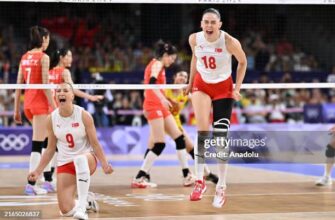In the ever-evolving landscape of international rugby, South Africa`s Director of Rugby, Rassie Erasmus, continues to carve a path as unconventional as it is compelling. Reports suggest that by 2025, a staggering 46 players will have donned the iconic Springbok jersey within a single calendar year—and that`s before the rigors of the Rugby Championship and Autumn Internationals even begin. This isn`t merely a statistic; it`s a profound statement on squad management, a deliberate strategy to build unprecedented depth that could redefine the very essence of national team selection.
The Unyielding Demand for Depth
Modern rugby is a brutal spectacle. The collisions are more ferocious, the game tempo relentless, and the physical toll on players immense. Consequently, injuries have become an unfortunate but predictable constant. A robust squad, capable of absorbing attrition without a significant drop in quality, is no longer a luxury but a fundamental requirement for sustained success. Erasmus, ever the pragmatist, appears to be operating on this principle, pushing the boundaries of what constitutes a “core” national squad.
This approach moves beyond simply having a few backup players. It speaks to a vision where almost two full matchday squads are maintained at international readiness. Such a philosophy ensures that should a key player succumb to injury or fatigue, a thoroughly tested, international-caliber replacement is immediately available. It’s an insurance policy written in sweat and strategic planning.
Erasmus`s Method: A Calculated Expansion
Rassie Erasmus has never shied away from bold decisions. From his innovative “Bomb Squad” bench strategy that propelled the Springboks to Rugby World Cup glory in 2019 and 2023, to his often-provocative media engagements, his tenure has been marked by a relentless pursuit of competitive advantage. This latest development—the expansive player rotation—appears to be an extension of that very ethos.
One might cynically suggest that this proliferation of players is simply a consequence of injuries or forced experimentation. However, the consistent narrative from the Springbok camp points towards a deliberate cultivation of talent and and experience. It`s about:
- Broadening the Talent Pool: Giving exposure to a wider array of players, particularly younger talent, to assess their capabilities at the highest level.
- Tactical Flexibility: Different players bring different skill sets, allowing the coaching staff more options to adapt to various opponents and game scenarios.
- Managing Player Load: Distributing playing minutes among a larger group helps mitigate burnout and reduces the risk of injury for key individuals.
- Future-Proofing: Building experience for the next generation of Springboks, ensuring a seamless transition as veterans inevitably move on.
The Balance Between Quantity and Cohesion
While the benefits of depth are undeniable, such extensive player rotation does present its own unique set of challenges. Rugby, at its heart, is a team sport that thrives on cohesion, established combinations, and shared understanding built through countless hours on the training paddock and in live matches. A constantly rotating door of personnel, however high-quality, could theoretically disrupt this delicate balance.
One might wonder: how does Erasmus foster a tightly-knit, highly functional unit when the faces on the team sheet seem to change with the seasons? This is where the true art of his coaching likely lies – in establishing a core set of principles, a non-negotiable team culture, and a playing system so robust that individual changes become less impactful. It demands immense clarity of communication and an unwavering commitment from every player, regardless of their immediate role.
The irony is not lost on seasoned observers: to build the strongest possible team, Erasmus appears willing to challenge the very notion of a `fixed` starting XV, embracing a fluid, almost kaleidoscopic approach to selection.
Implications for Global Rugby
If Erasmus`s strategy proves to be a blueprint for sustained success, it could prompt other nations to rethink their approach to squad management. The traditional model of a fixed core of 23-30 players might evolve into a more dynamic, expansive system. This isn`t just about preparing for the next World Cup; it`s about building a sustainable pipeline of international-grade talent capable of competing at the highest level year-round, year after year.
The Springboks, under Erasmus, are not just winning; they are experimenting, innovating, and, in the process, perhaps redefining the parameters of elite rugby performance. The number 46, far from being a mere statistic, represents a bold statement of intent, signaling a future where national team success is built not just on star power, but on the unwavering strength of an entire, remarkably deep, collective.









